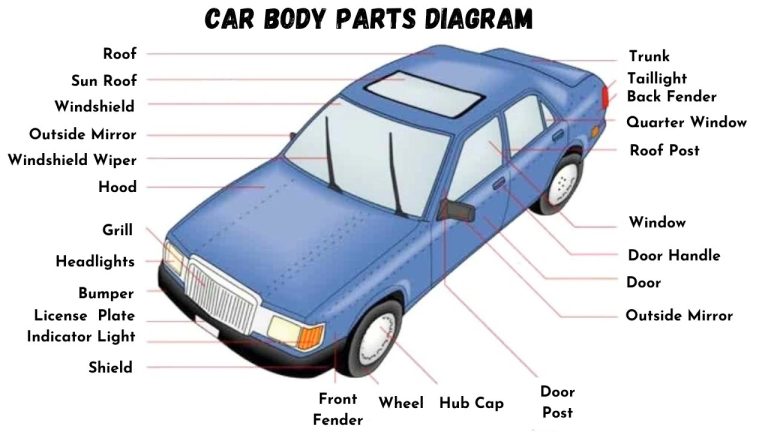What is a Lease Agreement for Car: Essential Insights
A lease agreement for a car is a contract between a lessee and a lessor. It outlines the terms for renting a vehicle for a specified period.
Leasing a car can be an appealing option for many drivers. It allows individuals to drive a new vehicle without the hefty upfront costs associated with purchasing. Typically, lease agreements last between two to four years, making them flexible for changing needs.
Monthly payments are often lower than those for financing a purchase, which can free up budget for other expenses. However, lessees must adhere to mileage limits and maintain the car’s condition to avoid extra fees. Understanding the terms of a lease agreement is essential for making informed financial decisions and enjoying the benefits of a leased vehicle.
Introduction To Car Lease Agreements
A lease agreement for a car is a contract between a buyer and a dealer. This contract allows the buyer to use a car for a specific time. The buyer pays a monthly fee rather than buying the car outright. Leasing often has lower monthly payments than buying.
Buying a car means paying the full price upfront. This option gives ownership after the payment. Leasing, on the other hand, does not provide ownership. At the end of a lease, the car must be returned. Buyers may prefer leasing for newer models with less maintenance.
| Aspect | Leasing | Buying |
|---|---|---|
| Ownership | No ownership | Full ownership |
| Monthly Payments | Lower payments | Higher payments |
| Maintenance Costs | Often covered | Buyer covers |
| Flexibility | Short-term commitment | Long-term commitment |
Key Components Of A Lease Agreement
A lease duration is the time you agree to rent the car. It usually lasts from two to five years. Make sure to check the specific duration in your contract.
Monthly payments are what you pay every month. They depend on the car’s price and your lease terms. Always verify the total cost before signing.
Mileage limits tell you how many miles you can drive each year. Most leases allow around 10,000 to 15,000 miles per year. If you exceed this limit, you’ll pay extra fees.
Overages occur when you drive more than the agreed mileage. These fees can add up quickly. Be aware of these costs before signing your lease agreement.
Financial Implications Of Leasing
Leasing a car involves some upfront costs and fees. These may include a security deposit, first month’s payment, and registration fees. Understanding these costs helps in budgeting.
Residual values and depreciation are important aspects of a lease. Residual value is the car’s expected worth at the end of the lease. A higher residual value usually means lower monthly payments.
End-of-lease charges can surprise many drivers. Charges may include excess mileage fees and wear-and-tear costs. Knowing these fees helps avoid unexpected expenses.
Pros And Cons Of Car Leasing
Leasing a vehicle has many benefits. Lower monthly payments are a big plus. New cars often come with warranties. This means fewer repair costs for you. Leasing also allows you to drive the latest models.
Fuel efficiency can lead to savings at the pump. Insurance rates may be lower for leased cars. It’s easier to switch vehicles every few years.
On the downside, mileage limits often apply. Exceeding these limits can lead to extra fees. Customizing a leased vehicle is usually not allowed. At the end of the lease, you must return the car.
Understanding Lease Terms
A lease agreement for a car is a contract between the lessor and lessee. It outlines the terms for using a vehicle for a set period. Key terms include monthly payments, down payment, and mileage limits. Understanding these terms helps in making informed decisions.
The glossary below explains common lease terms:
| Term | Definition |
|---|---|
| Residual Value | The car’s expected value at the end of the lease. |
| Capitalized Cost | The total price used to calculate lease payments. |
| Lease Term | The duration of the lease agreement. |
| Wear and Tear | Normal damage that occurs during the lease. |
Negotiating lease terms can save money. Always ask about lower monthly payments or a better mileage allowance. Understanding the terms helps you make the best choice.
Insurance Requirements For Leased Cars
Leased cars have specific insurance requirements. These are crucial for protecting your investment. Coverage standards often include liability, collision, and comprehensive insurance. Each state has different rules about these policies.
Gap insurance is important for leased vehicles. This type of insurance covers the difference between the car’s value and what you owe. If the car is totaled, gap insurance helps you avoid financial loss. Many leasing companies require this coverage for new leases.
| Insurance Type | Description |
|---|---|
| Liability Insurance | Covers damages to others in an accident. |
| Collision Insurance | Covers damage to your car from an accident. |
| Comprehensive Insurance | Covers non-collision events like theft or vandalism. |
| Gap Insurance | Covers the difference in case of a total loss. |
Lease Agreement Termination
Terminating a lease agreement early can lead to penalties. These penalties vary based on the contract. Some agreements may require payment of remaining lease amounts. Others may charge a flat fee for early termination.
Options at the end of a lease include buying the car. This means paying a set price to own it. Another option is renewing the lease for a new term. Some may choose to return the car and lease a new one.
| Options | Description |
|---|---|
| Buy the Car | Pay a set price to own the vehicle. |
| Renew Lease | Extend the lease for a new term. |
| Return the Car | End the lease and lease a new vehicle. |
Tips For First-time Lessees
Before signing a lease agreement, do thorough research. Understanding terms helps avoid surprises later. Look into different car models and their leasing options. Check monthly payments and total costs. Compare offers from various dealers.
Ask the dealer important questions. Here are some key ones:
| Question | Why It Matters |
|---|---|
| What is the total lease cost? | To know what you’ll pay overall. |
| Are there any hidden fees? | Helps you avoid unexpected charges. |
| What is the mileage limit? | To prevent extra costs for excess mileage. |
| Can I purchase the car later? | Gives you options after the lease ends. |
Frequently Asked Questions
What Is A Lease Agreement For A Car?
A lease agreement for a car is a contract between the lessee and the lessor. It allows the lessee to use a vehicle for a specified period while making monthly payments. The contract outlines terms like duration, mileage limits, and maintenance responsibilities.
How Does A Car Lease Work?
In a car lease, you pay to use the vehicle rather than buy it. You make monthly payments based on the vehicle’s depreciation and agreed-upon mileage. At the end of the lease term, you return the car or have an option to buy it.
What Are The Benefits Of Leasing A Car?
Leasing a car offers lower monthly payments compared to buying. You can drive a new vehicle every few years without worrying about depreciation. Additionally, most leases come with warranties, covering maintenance and repairs during the lease term.
What Are Common Lease Terms?
Common lease terms typically range from 24 to 48 months. Most leases include mileage limits, often between 10,000 to 15,000 miles per year. It’s essential to understand these terms to avoid additional fees at the lease’s end.
Conclusion
A lease agreement for a car is crucial for both parties. It outlines responsibilities, payment terms, and vehicle condition. Understanding these elements can help you avoid disputes. Always read the fine print before signing. A well-structured lease benefits you by providing clarity and protection throughout the leasing period.






